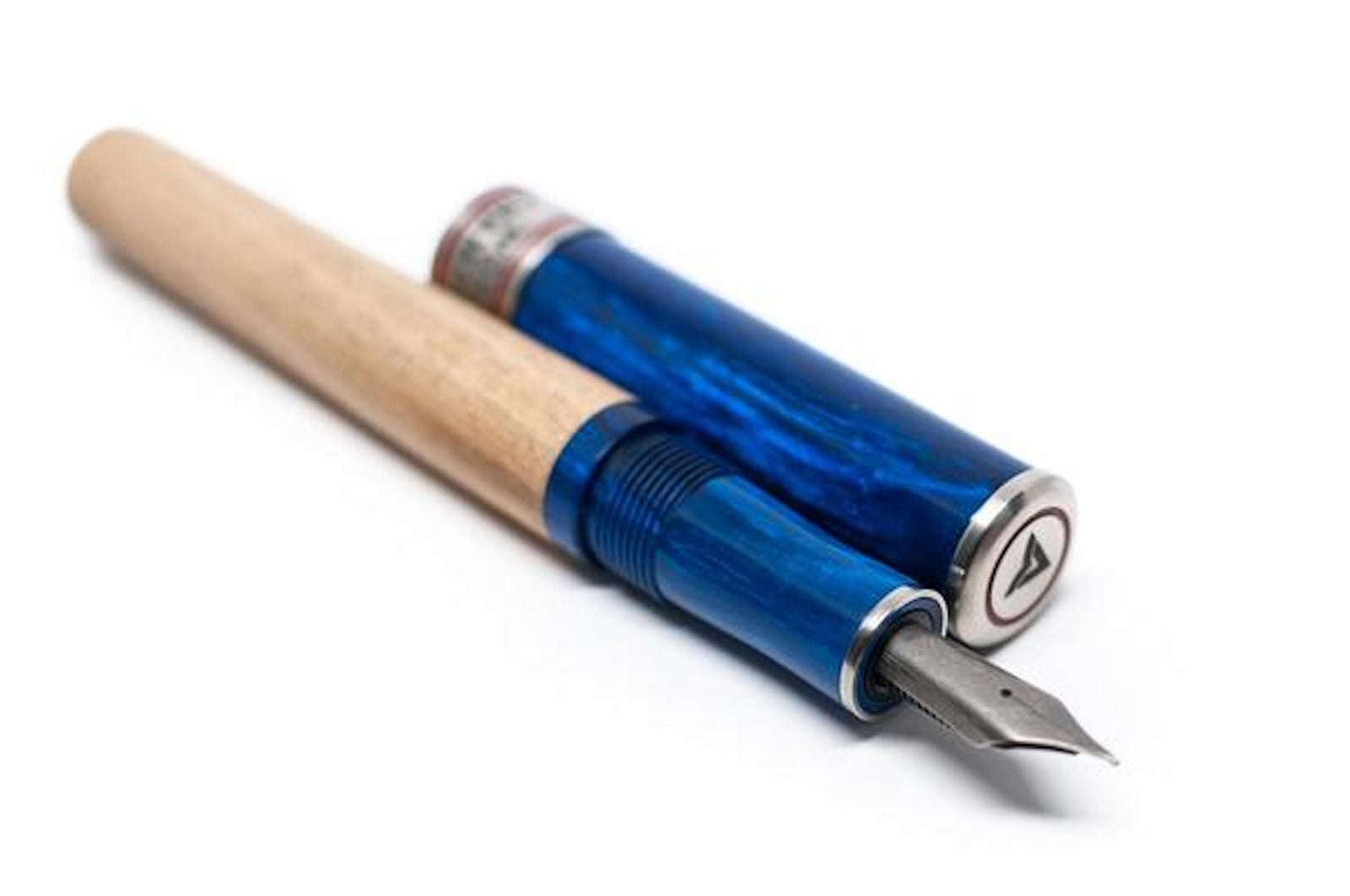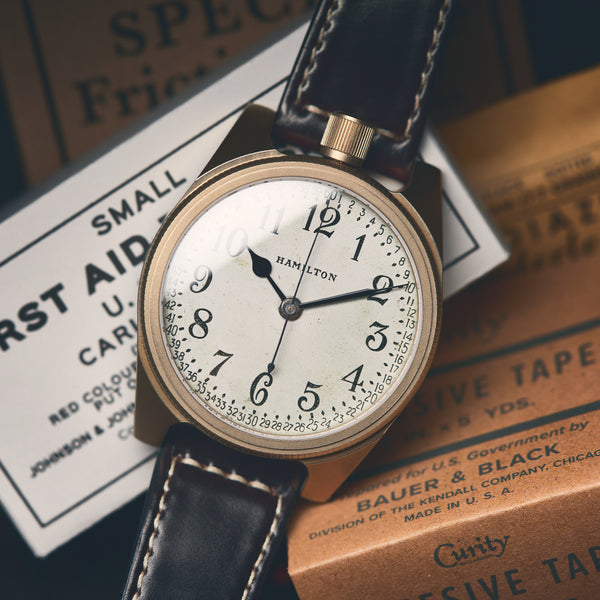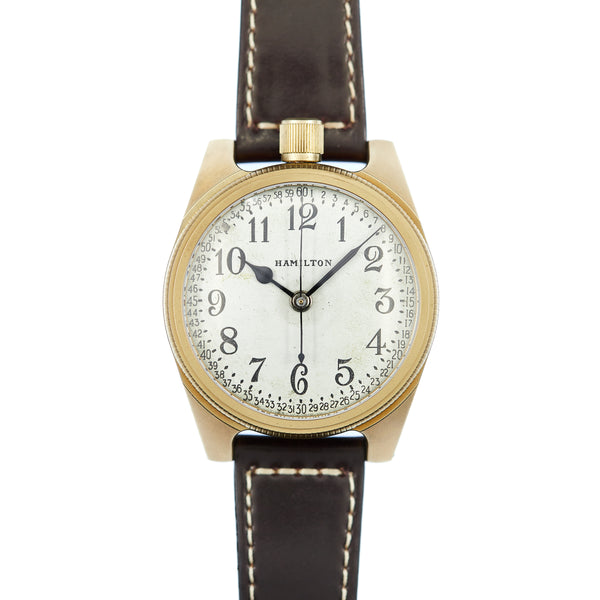To be honest, I was not very familiar with the world of pens until the early phases of our new historic woods collaboration with expert pen maker Tim Cullen. The most I knew was that fine pens intersect with the world of watches often due to their shared commitment to extraordinary craftsmanship.
However, while doing my homework on Tim’s craft, I thought I’d share what I have discovered, and now admire, about the world of fine pens. I’ll focus on fountain pens because our new collaboration pens are fountain pens, but I will also include a brief overview of other common pen types.
The segments included are:
-Types of Pens
-Fountain Pens
-The Romance of Fine Writing Instruments
-Vortic Historic Collaboration Pens
Types of Pens
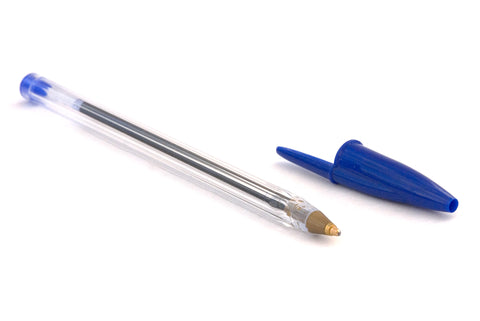
Ballpoint - Ballpoint pens are the world’s most used writing instrument. They were originally developed to be a cleaner and simpler alternative to quill and fountain pens, and pen manufacturers continue to produce high-end and collectors’ ballpoints for specific markets.
The concept behind a ballpoint pen is fairly simple; ink is dispensed over a metal ball that is housed in a precisely shaped point. As the pen moves across the writing medium, the ball rolls to transfer the ink to the page. Most ballpoints are made from steel, brass, or tungsten carbide.
Pros - usually cheap, easy to use, relatively fast drying ink
Cons - usually disposable, oil based ink will stain clothing, viscous ink can accumulate on tip, viscous ink requires relatively firm grip pressure
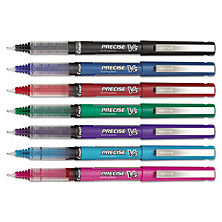
Rollerball - Rollerball pens use the same writing mechanism as ballpoint pens, but they operate differently because they use different ink. Rollerball ink is usually a water-based liquid that flows more easily than ‘regular’ ballpoint pen ink. Because of this, less pressure is needed to mark the paper and the ink dries quickly by absorbing into the paper. This means that rollerball pens are very smooth to write with and avoid the ink build up and mess that some ballpoint pens exhibit.
Pros - quick drying, less pressure allows for comfortable writing experience and finer lines, consistent darkness, wide range of ink colors
Cons - bleed and feathering due to liquid ink, short refill life compared to ballpoint pens due to fast disbursement, can leak if un-capped
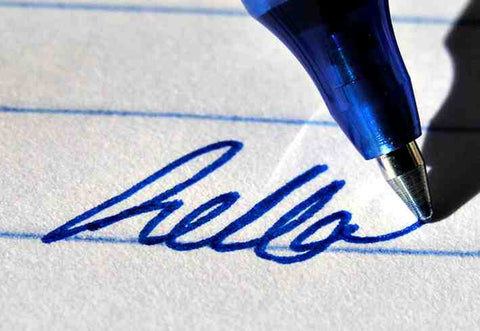
Gel - Gel ink pens also leverage a ballpoint mechanism, but they use gel ink. Gel ink is synthesized by suspending pigment in a water-based gel, and it comes in a multitude of bright and bold colors. The consistency of gel allows it to sit on the writing medium longer and dry slower, thus creating finer lines without bleeding.
Pros - many vibrant colors, finer lines without bleeding
Cons - long drying times, short refill life
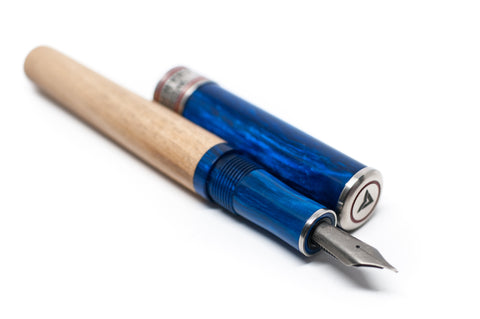
Fountain - Fountain pens are usually associated with a higher quality because of their craftsmanship and history. Fountain pens use a nib (a slit cylinder cut to a point) to dispense ink on the page. Unlike pens that require the user to dip the nib in ink to mark the paper, fountain pens contain a reservoir of ink. The ink is transferred to the page through a tube to the nib via a combination of gravity and capillary action. Contrary to common perception, modern fountain pens (made in the last 50 years or so) are not ‘scratchy,’ and fine fountain pens can create an unparalleled writing experience.
Pros - customizable nib sizes, exchangeable nibs, wide variety of ink selection, variable line weight, refillable and reusable - a.k.a. not disposable
Cons - require more attention and practice when writing to produce good results, may require maintenance when used repeatedly over time
Fountain Pens
History
Fountain pens are a derivative of the early quill or feather pen that was dipped in ink. In the mid-1850’s, pen technology began developing quickly as the need for pens increased. It was not until the second half of the 19th century, however, that relatively modern and manufacturable ink reservoirs and feed systems were developed that exponentially increased convenience and usability (very similar to the timeline of modern watch production!).
Modern fountain pens consist of a nib (writing point), a reservoir (tank to hold the ink), a cap, a clip, and a barrel (the main body of the pen). The ink in the reservoir flows to the nib through a small tube due to the effect of gravity and capillary action. The nib is split so that different writing pressures create different line weights.
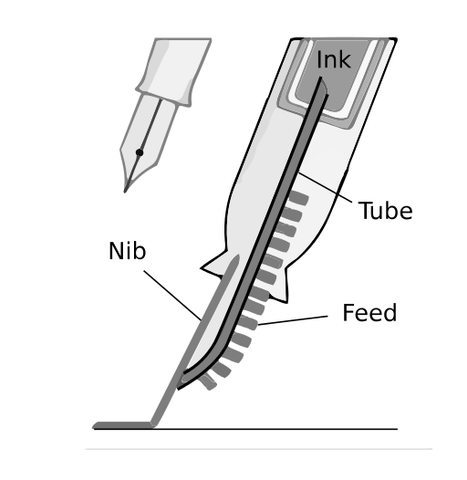
Nibs
As the part of the pen that actually contacts the writing medium, the nib is very important. Nibs are most commonly made from steel or gold alloys, and they come in a variety of tip sizes such as fine, medium, and broad as well as a variety of in-between and extreme sizes.
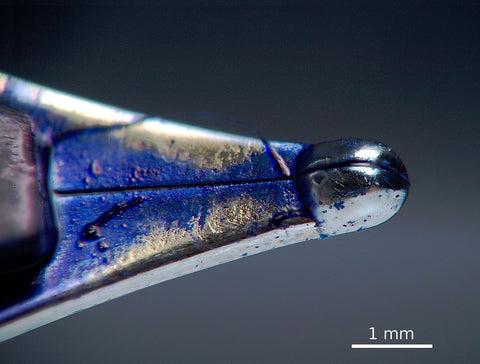
The flexibility of the nib should also be considered, which translates to the amount of line variation you can achieve through putting pressure on the nib. This is controlled by the material and the thickness of the material used to make the nib. For example, a thick steel nib will have a very small amount of flexibility while a thinner gold nib will have a large amount of flexibility.
Filling mechanisms
Filling mechanisms may not vary as much as nibs, but it’s important to choose one that works best for you. The most basic reservoir can be filled with a pipette or syringe where the ink is deposited directly into the reservoir. Many filling mechanisms exist, but the piston system seems to be the most common. With a piston system, the tip of the pen is simply dipped into the ink, and a screw mechanism operated by the user draws the piston up. The rising piston causes a vacuum that sucks up the ink.
Pens that have a converter can be replenished using pre-filled cartridges or independent filling mechanisms. Most filling systems made for converter pens use an internal piston system located directly on the reservoir. Vortic’s collaboration pens use a piston converter mechanism.
Barrel and Body Materials
A pen can be made out of just about anything, but the most common materials are plastics and metals. Metal is heavier and plastic is lighter, and what you choose has much to do with personal preference. The most important aspect of the barrel and body (as well as all components of pens and watches) is craftsmanship. If high-quality materials are improperly worked then the final product will suffer.
The Romance of Fine Writing Instruments
Why do I care about nice pens?
To put it briefly, fine writing instruments offer a very pleasant, smooth writing experience that has a character and romance unachievable by disposable ballpoint pens. As a recent pen convert, I can attest that the experience of writing with a fine pen is such that it is hard to describe without feeling emotion. A fountain pen adds a certain personality and feeling to your writing that is unbeknownst to the average consumer. It brings a sense of joy and connectivity to your task, and it requires mindfulness and presence that is, in turn, reflected in your work. For watch collectors, I would compare the experience of writing with a cheap ballpoint pen vs writing with a fine fountain pen to wearing a quartz Timex vs. wearing a fine mechanical watch.

What to look for in a fine pen
The most important aspect of a fine pen is craftsmanship. Quality materials are also necessary, but personal preference is more important in this situation. If the pens that you write best with are made from acrylic, there are limitless choices. What separates the best pens in that category is craftsmanship. If an expensive pen that you plan to use regularly does not fit your writing style, then all other qualifiers are negated.
However, there are a few features to look at when examining a piece of fine pen craftsmanship. The first is balance. There should not be an excessive amount of weight towards the nib or vice versa because this will result in a poor writing experience. Secondly is fit. The cap should thread or snap snugly to the barrel, the reservoir should be secure in the barrel, the actuation of the fill mechanism should be smooth, etc. A poor fitting pen will result in long-term usage woes and decreased value over time. Lastly is materials. Given that you are looking at pieces with a similar level of craftsmanship, you should select a material that will please you most or evoke the highest level of pride/appreciation when gripping the pen. Additionally, the clip should be attractive and robust. There’s nothing worse than the clip of what you consider to be a fine pen snapping off.
Vortic Historic Collaboration Pens
The collaboration between Hooligan Pens and Vortic is what inspired this blog, and it has been a pleasure to bring the Historic Collaboration Pen Collection to life. Tim Cullen's penmaking expertise paired with Vortic’s historic and modern inspiration has created a very special final product.
The first pen products are inspired by the Chicago Cubs’ recent world series win, and Vortic is commemorating the occasion with a pen made with wood from 1930’s Wrigley Field seats paired with a special edition watch powered by a movement dating the the Cubs’ last win 108 years ago. We call it the American Artisan Series "World Champions Edition,” and it is now available for sale.
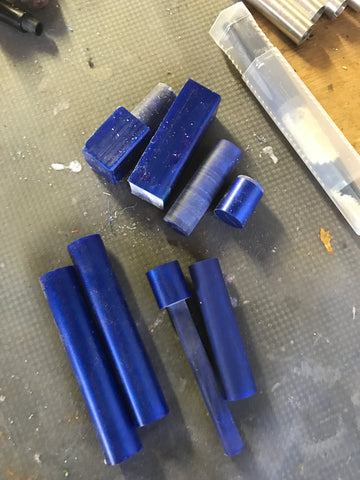
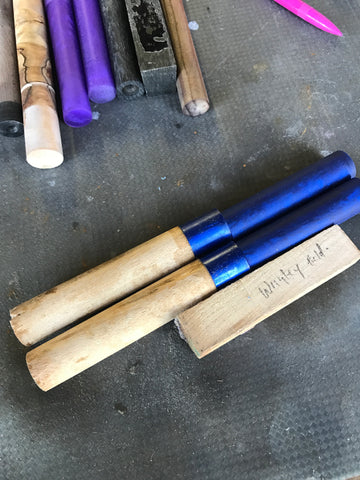
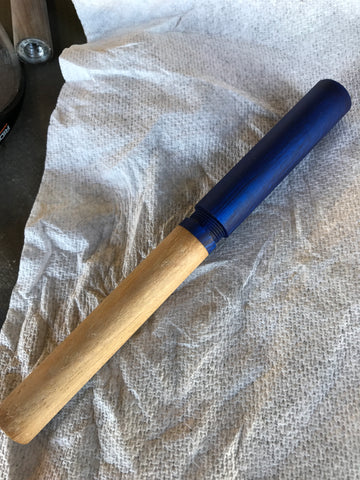
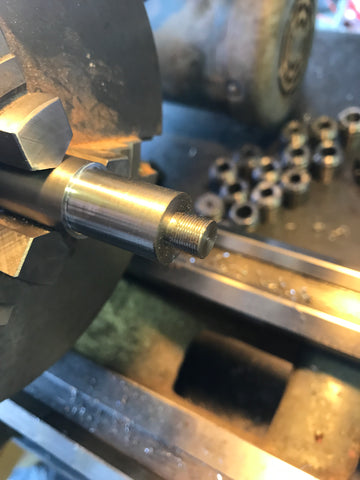
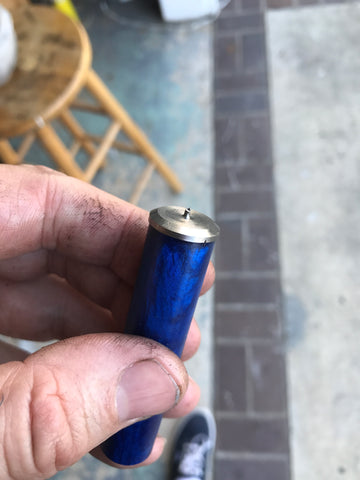
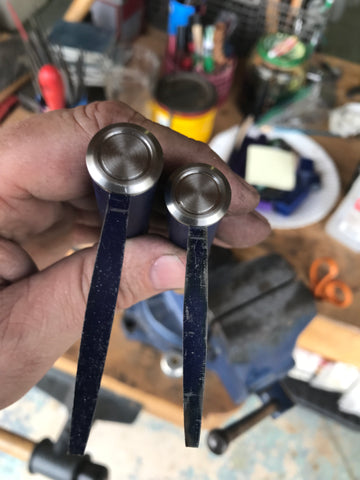
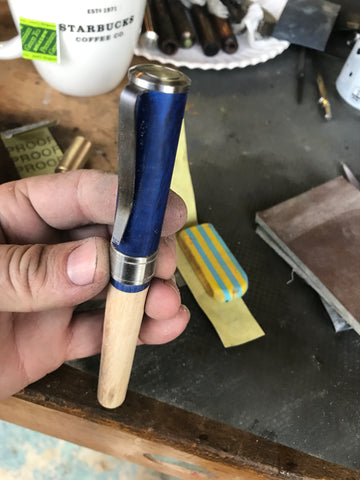
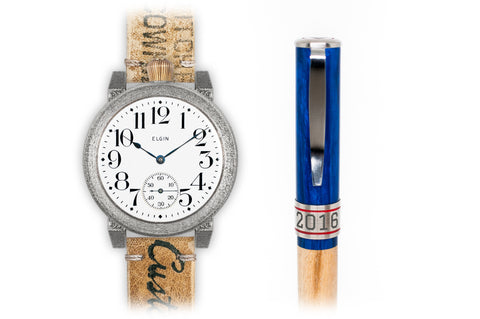
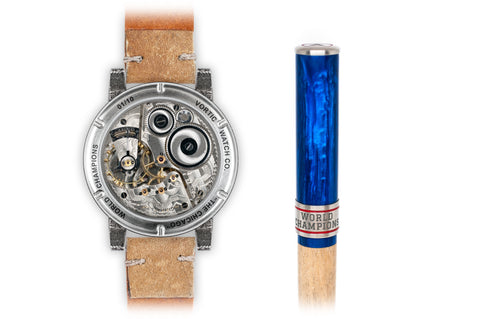
Also in the works are pens made with wood from 18th century Boston harbor and pens made with wood from a Lehigh Valley Railroad caboose. These pens are made with historic wood barrels, titanium caps, and unique Damascus steel clips. Contact someone at Vortic today to explore pricing and availability.
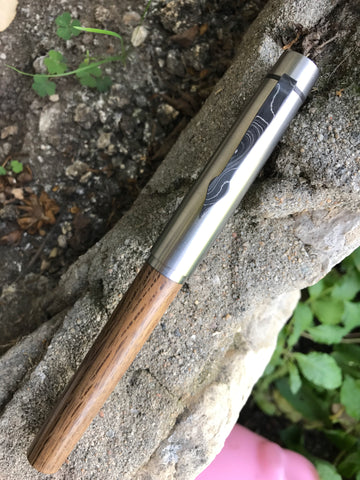
We are new to the world of pens, so make sure to post any comments or questions in the comments section, and as always we hope you enjoyed this edition of the Vortic Blog.
Regards,
-The Vortic Team

